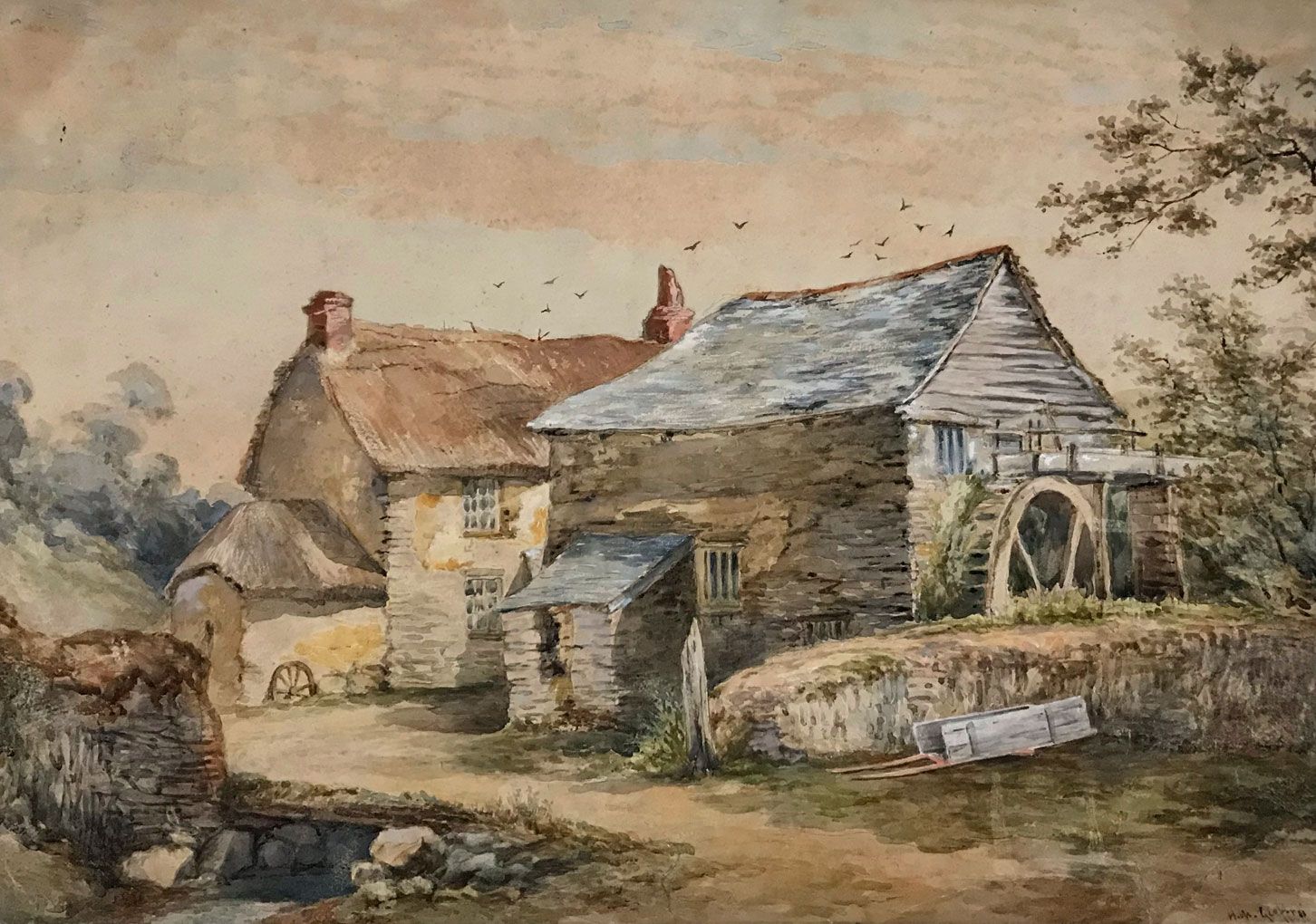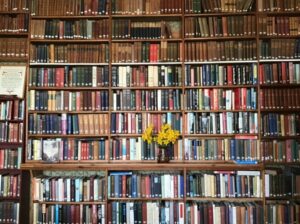Ertach Kernow - Cornish art and culture in historic Penzance
Penzance is the largest town to the west of Cornwall and has a huge range of historic and cultural heritage within the town and surrounding district. To be honest it’s understandable if people living in North Cornwall or the far east don’t travel to the west of Cornwall given the time to travel there for a day trip. However. a long weekend or a few days would be an interesting and delightful break with so much to see and do within a relatively small area.
With a long historic past Penzance was first mentioned in 1284 as Pensans. The name derives from the Cornish words for holy head, strange but perhaps not so when the patron saint of Penzance is St John the Baptist. Those with at least a smattering of biblical knowledge will know that John was beheaded under orders from King Herod Antipas and brought to a feast on a platter following a promise to his niece Salome. The historic seal of Penzance includes a representation of John’s head on a platter.
Thank you for reading the online version of the Ertach Kernow weekly articles. These take some 12 hours each week to research, write and then upload to the website, and is unpaid. It would be most appreciated if you would take just a couple of minutes to complete the online survey marking five years of writing these weekly articles. Many thanks.
Click the link for survey: Ertach Kernow fifth anniversary survey link
As always click the images for larger view
Like many forward-looking towns and communities in Cornwall, Penzance looks backwards to their own historic past and Cornish cultural heritage. The people of Penzance are fortunate in having town and former borough councils who have been especially supportive of providing and supporting public buildings and spaces especially where Cornish culture including art could thrive. This has also brought many economic benefits encouraging people into the town from overseas and throughout Cornwall. With so much given to culture in Penzance this piece looks at the area around Morrab Road which was developed during the 19th century.
When it comes to art the Penzance area has offered much to Cornwall over the past two centuries. Perhaps most well-known was the art colony originating in the 1880’s based at Newlyn on the outskirts of Penzance. But even before Stanhope Alexander Forbes, often acknowledged as the father of the Newlyn School, had joined with others in Newlyn, Penzance was already alive to art and artists. From the 1840’s onwards Penzance had become popular to visit and paint. This was part of Cornwall that attracted artists for the quality and clarity of the natural light as well as having many features to inspire painters of land and seascape art. A young man called Henry Malcolm Geoffroi had travelled to London from Boulogne, France aged just fifteen in 1840 to study art at South Kensington School of Art. He must have heard about Penzance and by 1853 had established himself by founding what would become the Penzance School of Art. Shortly after his arrival in Penzance he had initiated drawing classes at Hayle and later in St Just.
Henry was obviously very driven and passionate about art and encouraging other budding artists. His school of art was located in two rooms above the Princes Street Hall. With increasing demand for tuition from new students Henry needed to move to larger premises at Regent House at Voundevour Lane where it was known as the Regent House School of Art. He must have been extremely good as he was in demand and became master of Truro School of Art and also the Visiting Art Master at Truro (Grammar) School and later Truro Cathedral School. Records and directories show that in 1856 Henry was only one of five artists listed in Cornwall.
Photography was in its infancy in 1854 when Geoffroi organised a photographic exhibition of his students work. This was described as a fine example of photographs. Although he was never acknowledged as a professional photographer he was no doubt a knowledgeable amateur, sufficient to instruct his students. What was remarkable and a feather in the cap for Penzance was that at the time of its founding the Penzance School of Art was the first art school west of Bristol and proved to be a resounding success. So much so that by 1880 funds had been raised and construction of the school of art and free library begun in Morrab Road. The original designed by the famous Cornish architect Silvanus Trevail and later enhanced by Henry White. Perhaps by the 1870’s being the master of a school was more lucrative than being an artist as the 1873 directory does not list him as an artist, but a school master. Maybe he was no longer producing artwork, and this explains the small number of paintings that seem to exist. Besides his later work schooling art students in Truro he did travel to other places in Cornwall. This is evidenced through his painting of the ‘Good Intent’ fish cellar at Newquay and other rural scenes.
Although the Penzance Library in Morrab Road closed in 2016 Penzance Art School still operate from the building. Part of the library has now become the west Cornwall headquarters of Bewnans Kernow, meaning Cornish Life, who run the Cornish Heritage in Penzance centre. As mentioned in the Heritage Column last week this building is up for sale with attempts being made to ensure it remains a building benefiting the people of Penzance and surrounding area. The aim of a newly established community interest company is to revive Penzance Art School and its historic sister building: the Library and Science School forming a creative and cultural hub. A crowd funding has begun with more information on their website. Let’s hope this fine building continues to be used as part of Penzance and west Cornwall’s cultural heritage, continuing Henry Geoffroi’s legacy, and not fall into the hands of developers.
Penlee House Gallery and Museum is one of the finest Cornish institutions specialising in art from West Cornwall. It also benefits from extensive grounds in which there performance art is available to the public. Penlee House was built by wealth Penzance merchant John Richards Branwell and completed about 1865. It was surrounded by formal and informal gardens and bordered onto the estate of Charles Campbell Ross MP.
In 1839 the Penzance Natural History and Antiquarian Society founded the first museum in the newly rebuilt Market House. Outgrowing its space at this location it moved to the newly constructed St Johns Hall where it remain until 1947. In 1937 the society sold the collection to Penzance Borough Council for a token sum, with the proviso it would be displayed for public benefit. Following World War II the threat of Penlee house being demolished and the fifteen-acre estate sold for development saw a council initiative supported by a public appeal. This led to the purchase of the estate for £13,000 as a War Memorial. The house was opened as a museum and arts centre in 1949 and is now owned by Penzance Town Council ultimate successor to the earlier borough council. The building has undergone internal refurbishment retaining much of the character of the original Victorian house.
Perhaps best known for its collection of artwork especially from the Newlyn School of artists, the Penlee collection also has other Cornish artist’s work. The museum’s artefacts includes items relating to archaeology, natural history, social history and also a sizeable photographic collection. There is an ongoing education programme which includes workshops and guided tours of the gallery and museum. Having a large outside space available allows for other activities beyond what many museums can accommodate. The summer season sees the return of free ‘Art in the Park’ events every Thursday from the end of July to the end of August. The park contains gardens and woodland to enjoy as well as performance art at Penlee Open Air Theatre with seating for 300 people.
Nearby the Morrab Library and the public gardens are also a legacy of the Corporation of Penzance forward-looking policy from the 19th century. Morrab House in Morrab Gardens was originally built for brewer Samuel Pidwell in 1841, later becoming the property of Charles Campbell Ross. This was before Morrab Road was built and it was Ross who donated the land for Penzance School of Art. Defeated in the 1885 general election and with his banking business failing Ross sold his Morrab house and walled garden to the Corporation of Penzance for £3,120 for use as a municipal park.
The gardens opened on 27th September 1889 and what was originally known as the Penzance Library moving into the house the same year. Today the gardens contain a wide range of sub-tropical plants within the three-acre site. The original cast iron bandstand, ornamental fountain and memorials have been renovated maintaining these historic structures. The Library was formed in 1818 through the merging of two late 18th century Penzance book clubs. Now known as the Morrab Library this fantastic organisation has over 70,000 books with an extensive archive including newspapers thousands of photographs other images and documents. With specialisation in Cornish history, literature and people it also has a large digital collection of fifteen thousand west Cornwall related images. This is the only independent library in Cornwall supported by over 900 subscribers and one of about sixty within the United Kingdom. It hosts the Penwith Local History Group, events as part of the annual Penzance Art and Literary Festivals, school visits, book-making workshops and talks. This library is open to members of the public as guests.
A future article will look at other aspects of Penzance culture and the infrastructure provided. Penzance’s Golowan and Montol Cornish culturally based festivals are well supported. It has theatre, creative centres, and the historic Market House is back in public ownership. For those interested in cultural heritage Penzance is most certainly worth a visit and as one who enjoys the hospitality of historic and traditional pubs Penzance has some excellent ones.















